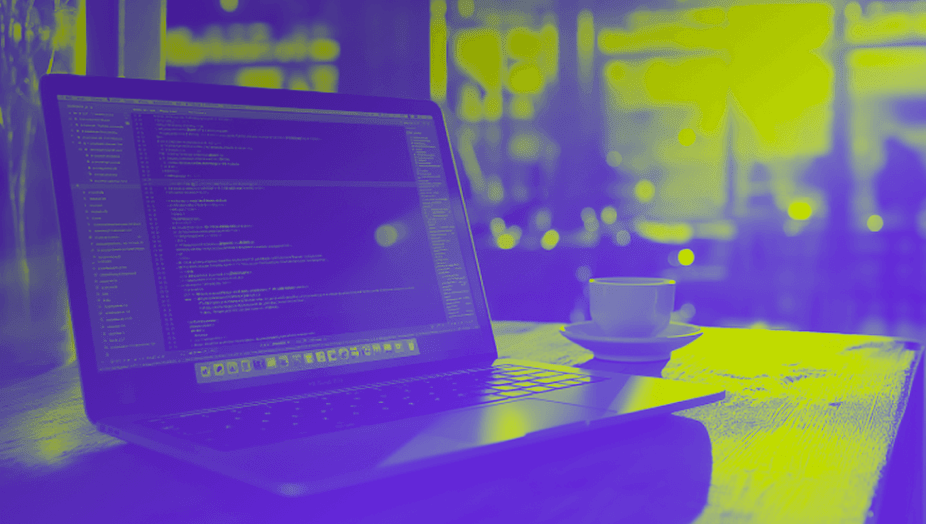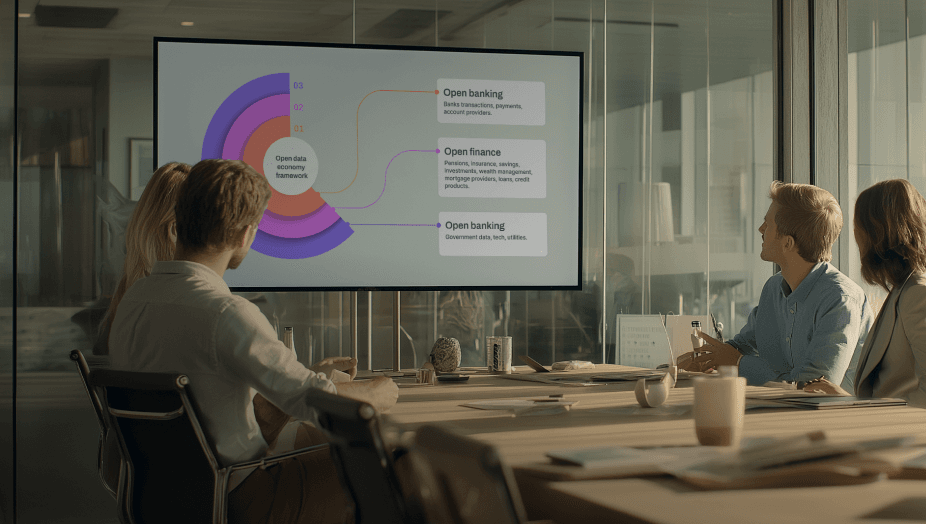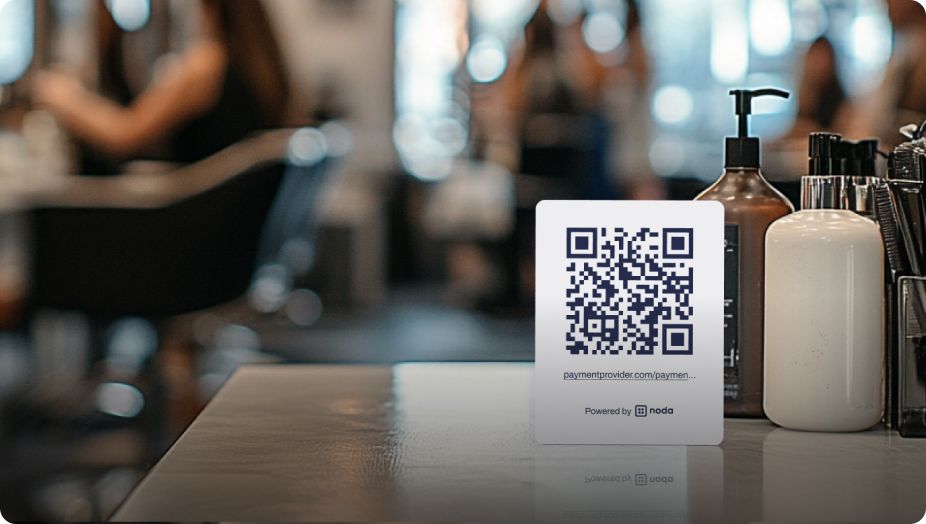
You’re thinking of adding QR code payments to your business but with so many different QR code payment methods, making the right choice seems tricky.
With 94% of UK residents aged 16+ now owning a smartphone, the convenience of a digital payment solution like QR codes is far-reaching. Finding the right solution, with the right QR code payment method, will instantly help to future proof your business and meet modern consumer demands.
So, in this article, we’ll help you get to grips with how different QR code payment methods work, and why open banking platforms like Noda’s enable the optimum efficiency for QR payments.
First Things First...What is a QR Code?
QR codes are small 2D squares that contain encoded data in a unique matrix pattern that can be read by a QR code scanner. The scanner decodes the data to direct users to the specific web page associated with the QR code.
They’ve been around since the early 90s, but when Apple introduced QR code scanners in smartphone cameras in 2017, with other smartphone providers swiftly following suit, their usage surged. Further buoyed by the 2020 COVID-19 pandemic, when people needed effective ‘touch-free’ solutions for everything from menus to vaccination status to sporting-events entry, QR codes are now part of our daily lives.
And QR code payments have been one of the fastest growing payment methods in the world.
How Does a QR Code Work For Payment?
How a QR code works for payment is by directing users, after scanning the code on their mobile device, to a secure payment gateway.
The encoded information in the QR code has details such as the customer's account credentials, the transaction amount or other payment-specific information. From here customers choose to pay with their credit/debit card, preferred digital wallet or via their banking app and then confirm and authorise the payment.
There are two variations of QR code payment technology:
- Static QR codes: Contains fixed information that cannot be altered once the code is generated. Data stored in the code can be accessed an unlimited number of times by an unlimited number of users.
- Dynamic QR codes: Information, such as payment amount, can be changed/updated after the code is generated. The code doesn't contain the data and instead references to an online location where the data is stored. They require an active internet connection to retrieve the stored data, whereas static QR codes do not.
For a business to accept payment through QR code, they need to have a payment service provider (PSP) that supports QR code payments. The process and functionality will depend on the PSP and what QR code payment methods they work with.
PSPs can be a banking institution, a digital wallet service, a dedicated payment app/platform (e.g Stripe, Adyen, etc.) or an open banking platform like Noda.
Below, we look at different QR code payment methods in more detail.
What Are the Different QR Code Payment Methods?
On scanning the merchant’s QR code, customers are directed to a payment page to check-out using one of the pre-installed payment solutions, including:
Digital Wallets
Digital wallets, also known as e-wallets and mobile wallets, are an app or online service used to make payments electronically. They can also be used for e-tickets, boarding cards and other documents, as well as for crypto transactions.
Digital Wallets securely store payment information and passwords to create digital versions of credit and debit cards on mobile devices. For security, card numbers and personal information are not stored.
Apple Pay, Samsung Pay, Google Pay and PayPal are amongst the most common digital wallets.
Downsides of Digital wallets as a QR code payment method:
- Compatibility issues: Older devices and operating systems may not support the latest digital wallet app.
- Availability constraints between countries: Not all mobile wallets work in all countries.
- Slow settlement: Acts as a digital card payment, meaning settlement can take a few days, as with physical cards.
Debit and Credit Cards
QR code payment systems can also work directly with debit and credit cards, including the major card networks such as Visa, MasterCard and Amex.
After scanning the QR code, customers manually enter their card details on the payment page, in the same way they would when using any other web-check out page.
Visa recently announced collaborations with several QR payment providers to make card-based QR code payments more seamless. However, the changes have only been rolled out in Singapore so far.
Downsides of cards as a QR code payment method:
- Less efficient: Manually entering card details adds time and complexity to what can be an ultra-swift check-out process when used with other methods.
- Slow settlement: Card payments typically take 3 or more days to settle.
Open Banking
The most seamless QR code payment method is open banking. After scanning the code, users are directed straight to their banking app to confirm and authorise payments.
Open banking allows for financial data to be shared between banks and third-party service providers through the use of application programming interfaces (APIs). Therefore, enabling super-fast transactions, or instant transfers when both banks are part of Faster Payment (UK).
When QR code payments are used with an open banking provider like Noda, merchants and customers experience the most efficient, secure and quickest transactions when compared to alternatives.
Why Open Banking is the Best QR Payment Method
QR payments enable consumers to simply scan, pay and go, but there are additional benefits for both consumer and business when the QR payment system is supported by open banking.
Benefits for consumers
- Security: Uses advanced encryption and strong customer authentication (SCA) such as fingerprint or face recognition to log-in (plus biometric or PIN security to unlock the smartphone) to protect sensitive financial information. Meaning no more card skimming (less than 1.5% of QR code payment transactions were reported as fraudulent in 2023).
Benefits for businesses
- Low costs: Lower set-up fees, no costly card terminals and no hardware maintenance.
- Even lower costs: Bypass the expensive card networks with percentage-based transaction fees, and monthly costs.
- Security: Keep your and your customers’ sensitive information safe, as well as significantly reduce the number of chargebacks incidents.
- Instant funds: Skip the slow settlements from card payments and enjoy instant bank transfers.
General benefits of QR payments
- For consumers: Out for a run, but came across a great pop-up market, or tempted by the aroma of freshly roasted coffee? No problem, just scan a QR code to instantly settle purchases.
- For businesses: Versatile and portable, QR codes can be displayed in-store and on printed materials*, featured on webpages, shared via SMS/email/chat, or shown to clients on a tablet or smartphone to enable on-the-spot payments. Ideal for tradespeople on the go.
(*offline QR code payments are available to UK customers. Generating an instant payment link that can be shared via chat/WhatsApp/SMS/email offers the same convenient payment solution for customers outside the UK).
The downsides of QR payments
You can’t pay via QR codes if your phone battery dies, or you have tech problems, but that’s about it.
How Noda's QR Code Payment Solution Works
Noda’s QR code payment solution is powered by open banking, therefore offering both you and your customers all the great benefits discussed.
You can use Noda as your entire payment service ecosystem, or simply to integrate the best QR payment method into your business. With Noda as your QR code payment provider, you can enjoy:
- No setup fees and no expensive card networks
- Instant bank transfers directly from the customer’s account to yours
- Ultra-low fixed transaction fees, among the most competitive in the market (just £0.20 per transaction!)
- Watertight security: PSD2 compliant, FCA registered (UK)
- 24/7 customer support
- Analysis and insights with Noda’s unique data service, giving you invaluable client forecasting
- Seamless payment acceptance across 28 countries
- Tonnes of new features and improvements released every year to help you stay ahead of industry shifts
How to Get Started with Noda's QR Code Payment Solution
- Sign Up with Noda: Our on-boarding process is seamless, so you can accept payment through QR code within a day.
- Generate Your QR Code: Log in to your Noda dashboard, navigate to ‘QR Codes’, enter the transaction details and Create a QR code.
- Display Your QR Code: On invoices, printed materials, mobile devices or share it via digital channels.
- Customer Payment: Customers scan the QR code, confirm the payment in their banking app, and funds are instantly transferred to your account.
Conclusion
While there are a few options when it comes to QR code payment methods, using open banking provides the best user experience and helps businesses to better manage cash flow, save money and future proof payment processing.
Noda’s open banking solution ensures a seamless, efficient, and cost-effective QR code payment process. Speak to the Noda team today to find out how we can help elevate your business.
FAQs
Are QR code payments safe?
QR codes use encryption technology, multi-factor authentication/ strong customer authentication as well as the extra layer of security provided by the banking apps when the QR code payment method is open banking.
As a result, QR code payments have significantly low fraud rates.
How to verify a QR code before paying?
Before making a payment, customers should ensure the QR code is from a trusted source and verify the merchant's details, and the details of the transactions, ensuring it aligns with what they expect to pay.
A secure payment service provider will direct user to either a digital wallet, banking app or payment page to confirm and authorise the transactions.
What stores accept QR codes for payment?
A wide range of businesses now accept QR code payments, from major retailers to small businesses, as more and more consumers look for fast, cashless ways to pay. Business can display signs indicating QR code payment acceptance and inform customers about this option. Online stores can also integrate QR code payment solutions at checkout.
How are QR code payments made?
Customers make QR code payments by scanning the code with their smartphone's camera or a dedicated app. They are then directed to their banking app or a secure payment gateway to confirm and authorise the transaction.
If the QR code payment methos is open banking, funds are transferred instantly, providing a seamless payment experience for both business and customer.
How do QR code transactions work?
QR code transactions involve encoding information into a scannable code. When scanned, using a smartphone or tablet, the code directs the customer to a secure payment platform where they can confirm the transaction and authorise payment. QR code payments need to be supported by a payment service provider, such as Noda.
Latest from Noda

Open Banking Costs in the UK: What Ecommerce Merchants Should Know

How Does Open Banking Work? Guide for Merchants & Businesses

Open Banking Payment Integration: A Guide for UK Merchants

